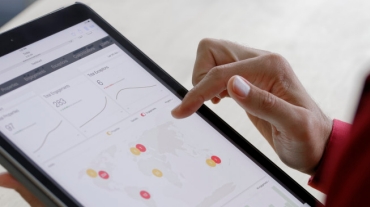LONDON, 4 April 2022 – The future of money is digital. It is estimated that more than 80% of central banks are considering launching a central bank digital currency (CBDC) or have already done so.1 The 2022 PwC CBDC Global Index (PDF)Opens in a new window (file size: 3.5 MB) analyzes and ranks the leading retail and wholesale CBDC projects. The Index evaluates the current stage of CBDC project development also taking into account central bank opinion and public interest.
Overall, retail CBDC projects (digital currencies designed for public use) have reached greater maturity levels than wholesale projects (digital currencies used by financial institutions that have accounts with central banks), but the past year has seen progress on a number of successful wholesale pilots.
Retail projects in the Index are led by the Central Bank of Nigeria’s (CBN) eNaira, the first CBDC in Africa, and the Sand Dollar, issued by the Central Bank of the Bahamas as legal tender in October 2020, making the Bahamas the first country to launch a CBDC. China became the first major economy to pilot a CBDC in 2020 with the digital yuan, and as of March 2022 pilot programs are running in 12 cities, including Beijing and Shanghai.
On the wholesale side, the leading project in the Index is the combined effort of the Hong Kong Monetary Authority (HKMA) and the Bank of Thailand (BoT) to launch the mBridge project, focused on developing a proof-of-concept prototype to enable real-time, cross-border foreign exchange payments on distributed ledger technology. Also ranked highly is the work of the Monetary Authority of Singapore (MAS), with two new CBDC projects, as it continues the development of a wholesale CBDC for cross-currency payments.
The PwC report also provides an overview of stablecoins, digital currencies collateralized by, for example, a fiat currency, which can allow a bridge to be created between the traditional financial ecosystem and digital technologies.
Haydn Jones, Blockchain & Crypto Specialist, PwC UK said: “This year’s Index shows that central banks are ramping up activity in the digital currency space. Countries are at differing levels of maturity with CBDCs and each country has different motivating factors. Increasing financial inclusion, facilitating cross border payments and controlling financial crime are all factors that come into play. We expect CBDC research, testing and implementation will intensify in 2022. The success of Nigeria’s eNaira is likely to spur CBDC development in countries where financial inclusion is one of the key desired outcomes.”
1 BIS Papers No 107 Impending arrival – a sequel to the survey on central bank digital currency (PDF)Opens in a new window
Ends.
Notes to editors
Data in the PwC Global CDBC Index is based on BIS Working Paper, No 880 (January 2022 update), the World Bank data and PwC analysis. Please note that the index depends on the availability of the BIS data, thus the index value is subject to be more conservative than the actual country progress. Data for the stablecoin overview has been sourced from Messari and CoinGecko.























